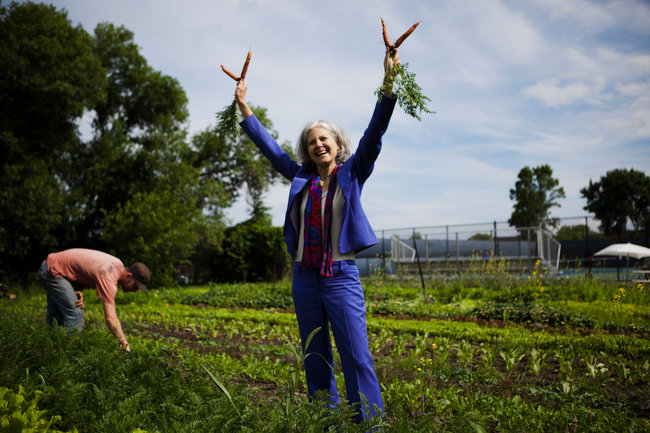By Fred Gardner
When Raphael Mechoulam entitled his 2012 talk to the International Cannabinoid Research Society, “Planning Research for the Next Half a Century,” he did not anticipate an ambitious start-up taking him literally.
Los Angeles attorney Gary Hiller has engaged Mechoulam, professor of Medicinal Chemistry and Natural Products at the Hebrew University of Jerusalem —and the co-discoverer of THC and CBD in 1964, and of anandamide in 1992— to help develop the research agenda of a new company called Phytecs. (Synthesized from Phyto, which is Greek for “plant,” plus EndoCannabinoid System.)
In his ICRS talk, Mechoulam suggested that investigators might profitably explore new applications for CBD, the uses of the CB-2 receptor, and the role of numerous fatty acids that are close chemical relatives of the body’s own cannabinoids. “I am glad that my work has played a catalytic role in drug development,” he commented in a March 1 email.
According to its website (launched quietly in late February), Phytecs will evaluate beneficial plants other than Cannabis that “produce compounds that interact with the endocannabinoid system in many different ways, from mimicking endocannabinoids to slowing or accelerating the enzymes that metabolize them.”
Initially the company plans to develop cosmetics, skin-care products, nutraceuticals, and food supplements —not drugs requiring FDA approval.
The crown jewel of the Phytecs site is a very clear, succinct-yet-thorough “Introduction to the Cannabinoid System,” by Ethan Russo, MD, who has left the employ of G.W. Pharmaceuticals to become Phytecs’ medical director. There is no more lucid expositor, and Russo’s piece will be widely read and appreciated.
Phytecs’s advisory board includes scientists Heather Bradshaw, Andrea Hohmann and Jürg Gertsch, ethnbotanist James A. Duke, and former Congressman Tony Coelho, who introduced the Americans with Disabilities Act.
Bradshaw runs a lab at Indiana University that has been trying to determine the cause, at the receptor level, of endometriosis and other disorders affecting female reproductive function.
Hohmann also directs a lab at IU. “Her laboratory first demonstrated that activation of CB2 receptors suppresses the processing of nociceptive information,” says her Phytecs resume. “Her lab also demonstrated that endogenous cannabinoids are mobilized in the brain underlying a phenomenon known as stress-induced analgesia. This work identified the enzyme monoacylglycerol lipase as a previously unrecognized analgesic target.”
Gertsch, now a professor at the University of Bern in Switzerland, determined that beta-caryophyllene in Echinacea exerts effects through the CB-2 receptor. His current research, according to the Phytecs site, “focuses on molecular pharmacology of the endocannabinoid system and drug discovery.”
The site provides an intriguing list of plants known to contain beneficial compounds that might be incorporated into balms of various kinds. We all know that at least one of them makes beneficial compounds, and that cosmetics and nutraceuticals derived from it will be available in Costco sooner rather than later.
Artemesia Members of the daisy family and noted for their high essential oil production, including wormwood, mugwort and sagebrush. Thujone produced by wormwood was once thought to act as a cannabinoid, but has recently been shown to have a rather weak affinity for cannabinoid receptors, though it is active at other receptors.
Camelli A genus of Asian flowering plants. Contains many ornamental varieties and also Camellia sinensis, the tea plant. C. sinensis produces catechins and flavonoids that interact with the ECS.
Cannabis Cannabis produces a wide range of phytocannabinoid compounds that interact with the endocannabinoid system and associated receptors. Cannabis also produces entourages of compounds that are of great interest, because of their synergistic effects.
Catha A small genus containing three species. The most famous is Catha edulis, a stimulant herb used in Africa and the Middle East. At least one alkaloid produced by the plant has been shown to elevate endocannabinoid levels in animal tissue studies.
Desmodium This is a large group of plants, including the tick-trefoils, many of whom produce very active essential oils.
Echinacea A genus of nine plants called coneflowers within the daisy family. Echinacea purpurea is a popular herbal remedy, though large controlled studies supporting its efficacy are lacking. This species appears to produce alkamides and other constituents that interact with CB receptors.
Glycine Members of the bean family, noted for Glycine max, the soybean. Some flavonoids in this genus appear to inhibit ECS enzymes.
Helichrysum A genus of over 600 plants in the sunflower family. Some members produce compounds with striking chemical similarities to cannabinoids.
Heliopsis A small genus in the sunflower family, that includes the oxeyes, common across the central US and Canada.
Laminaria A genus of over thirty species of brown algae commonly called kelp. Some of this genus produces polyunsaturated fatty acids that are chemically similar to endocannabinoids.
Lepidium A genus of the mustard family. Noted for the “superfood” called maca, and garden cress.
Lyngbya Not a plant genus, but one of cyanobacteria. Some of these produce interesting polyunsaturated fatty acids.
Morinda A genus of eighty or so species in the madder family, some of which have been used for centuries in traditional Asian medicine.
Pinus The subgenus that includes many European species of pine. It is believed that some species of pine produce analogs of endocannabinoids.
Piper An enormous genus containing over 2,000 species of pepper plants. Piper nigrum is commonly known as black pepper and produces the terpenoid b-caryophyllene that functions as CB2 agonist. The kava plant, also of the Piper genus, produces a kavalactone that has significant CB1 affinity.
Pistacia A genus of shrubs and small trees in the cashew family. Besides the well known pistachio tree, other members of this genus produce medicinal resins which have been used since antiquity.
Protium A genus of over one-hundred flowering plants, primarily trees, many of which are native to Central and South America.
Radula Members of the liverwort family. Radula marginata, native to Tasmania and New Zealand, was one of the first and only plants, beyond Cannabis, found to produce a phytocannabinoid.
Rhodiola A genus in the stonecrop family noted for sedums. Rhodolia rosea known as goldenseal root is a popular herbal medicine.
Ruta A genus of evergreen shrubs noted for their production of intensely aromatic oils, several of which are of potential interest.
Salvia The largest genus of the mint family. It includes common sage and also Salvia divinorum, a potent psychoactive.
Syzygium A genus belonging to the myrtle family, mostly consisting of evergreen shrubs and trees. The most well-known maybe Syzygium aromaticum known as clove, which contains beta-caryophyllene, a CB2 receptor agonist.
Trifolium A genus of three-hundred plants in the pea family, noted for clover or trefoil.
Tuber A genus in the Tuberceae family of fungi that includes the black truffle. Recently, an analysis of black truffles found traces of anandamide, a principal endocannabinoid.
Asked why the company has chosen not to focus on cannabis, given the founders’ history, the auteur of the website responded poetically, “Phytecs is focusing on the target, rather than the arrow.”
Relevant background: O’Shaughnessy’s account of Mechoulam’s 2012 talk to the ICRS.





